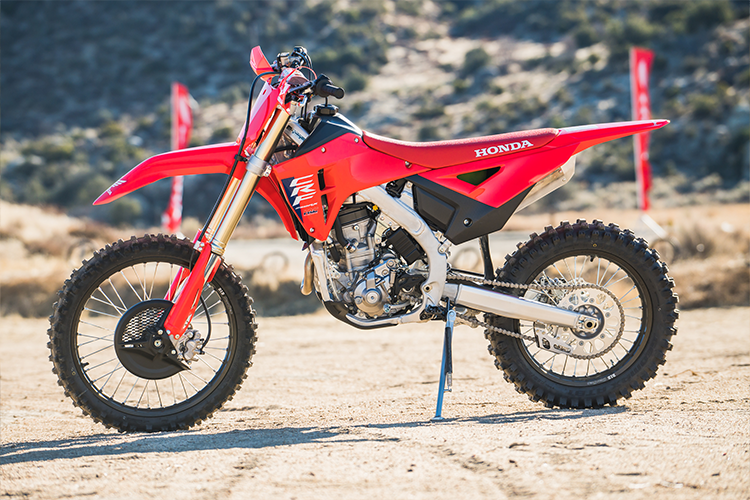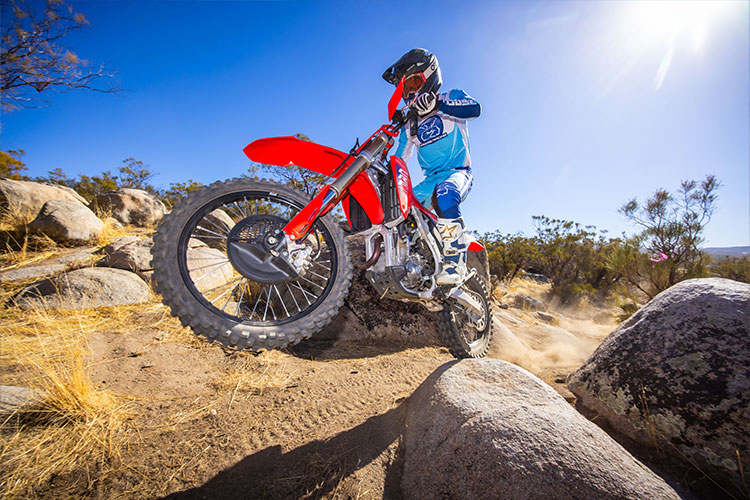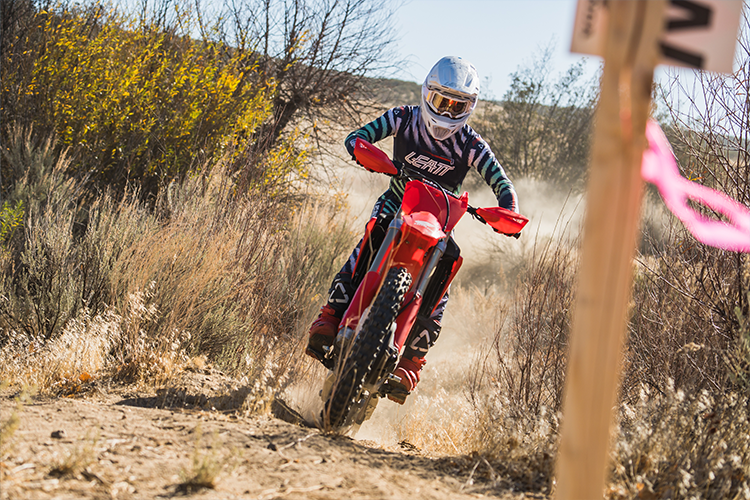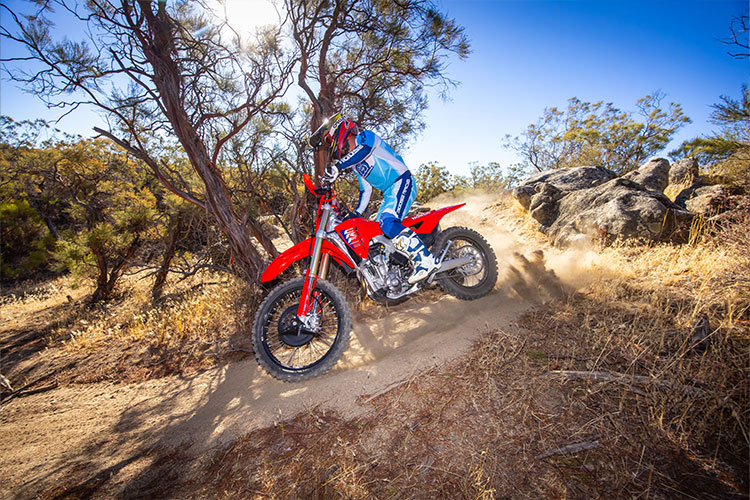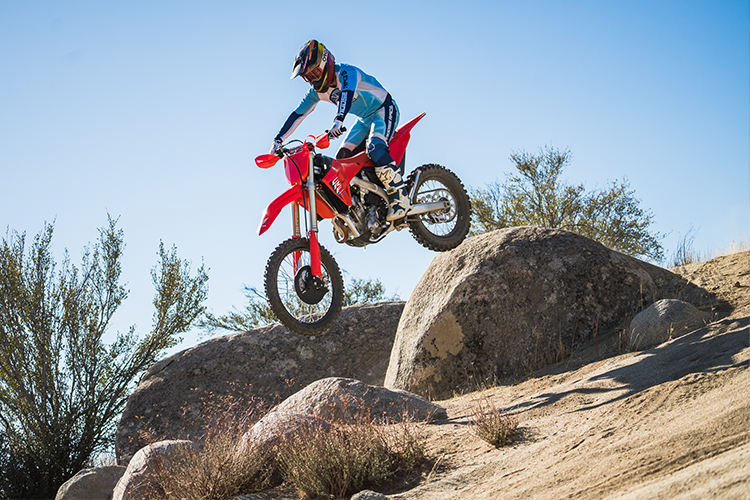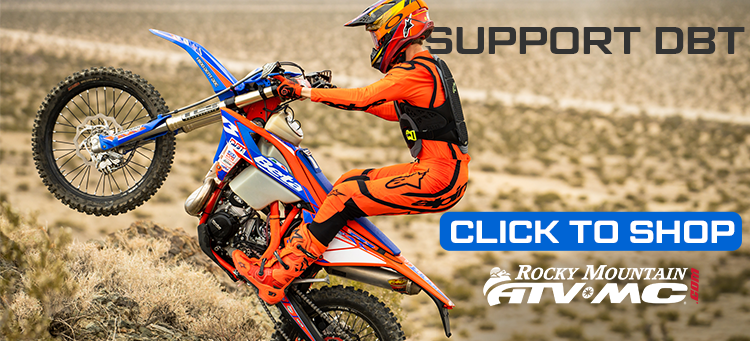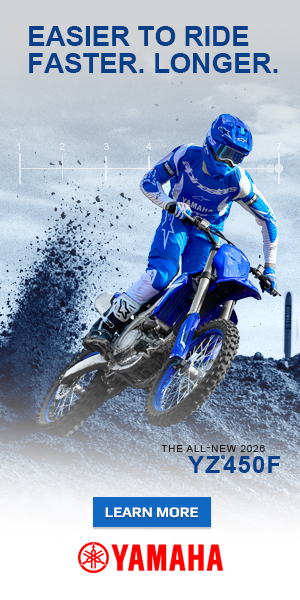Honda’s Updated Small Bore Off-Road Racer
Story by Trevor Hunter, Photos by Trevor Hunter/Simon Cudby
Honda’s new CRF250RX sees a lot of updates to the chassis, bodywork, and other various bits and pieces for 2025. A 70% new chassis with essentially a stiffer frame and more rigid components concerned some on paper, but we were on-site at Motoventures in Anza, CA to ride the new bike, along with the CRF450RX found HERE, for a day in dry, slick hare scrambles-like conditions.
The engine performance on the 250RX is effective and positive for an off-road bike. It doesn’t make peak horsepower at 13,000 RPM and it isn’t the most exciting, but that typically doesn’t translate into what you really want or need out of an off-road motorcycle. You can’t ride through rocks, turn around trees, or wack the throttle open in hard slick dirt or mud at high RPMs very effectively, and that’s what you find more often than not when racing or riding off-road.
The 250cc engine packs a lot of torque and smooth, usable bottom-mid range power. We didn’t suffer from flameouts at low RPM, low throttle openings and there was just enough meat to maintain momentum and keep the bike moving. As you moved into the top end, the engine started to sign off earlier than some of its competitors, but as we said before, that’s not necessarily a bad thing. The RX engine is potent and capable in the off-road arena.
Similar to, but not as drastic as the 450RX, Honda has found good comfort out of the Showa suspension components on the smaller 250F. While it’s not as free feeling as the 450, we still found good comfort and predictability out of it. The forks felt to be a touch softer than the shock, so we stiffened up the fork compression 2 clicks to keep it higher in the stroke under heavy loads while still maintaining the initial plushness in the rocks and small bumps.
The shock soaked up the acceleration chop, tracked straight, and drove through rocks with ease. We ran sag at 104-105mm and didn’t feel a need to touch the clickers after adjusting the fork compression.
The chassis on the old 250F platform wasn’t as hyper sensitive and polarizing as it was on the 450, but it still had some of the same characteristics that we didn’t particularly enjoy. The new chassis is predictable and offers less feedback particularly through the front of the motorcycle from the old 250RX. The stability is increased and the front end is less nervous feeling and more confidence inspiring than before – something most riders will rejoice.
Like the 450, there are a few areas we’d like to see improved. The gas tank is large and wide and obtrusive in stock trim. It carries over from the last bike (which we didn’t like it on either) so your old aftermarket tank will bolt right up, but we don’t enjoy riding with the wide stock tank. We really dislike the front tire in particular and really struggled with front end traction today which we feel is due to the AT81F and would recommend at the very least that you have your favorite front tire in stock when you pick up this bike. The previous gen bike improved greatly from just replacing the front tire, and we suspect this bike will be the same. The tire is stiff, has poor traction across the board, and overall just hurts the bike’s performance. Dunlop’s AT82 is a very good replacement tire that would be the first modification to this bike if we’re looking to stick with Dunlop tires. For true off-road riding, a 6-speed transmission would be very beneficial as some of the other heavy hitters like Yamaha and the Austrian OEMs have this in their 250F’s, but that is a bigger ask than improving the gas tank or addressing the tire situation.
The changes on paper translate to a better CRF250RX on the trail and the CRF250RX continues to be one of the most fun models Honda produces (behind the CRF300L??). It is a true off-road 250F that is capable of racing or trail riding, or a mix of both, and is one that fits a wide range of riders in size, ability, and their preferred terrain.
